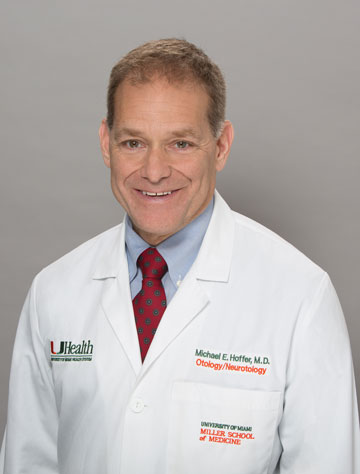Denise Vidot, who began researching the impact of cannabis on health and well-being long before the stigma against its medicinal use had diminished, has earned a new designation for her lab that incorporates the study of psychedelics, which she defines as psilocybin, ketamine (a legalized synthetic variation), and ayahuasca (a plant-based psychedelic).

The overarching focus of the psychedelic branch of her International Cannabis and Psychedelic Research Lab is to assess how psilocybin is independently affecting mental health amid the pandemic and how psilocybin in conjunction with cannabis affects mental health symptoms and cardiovascular disease risk, said Vidot, an assistant professor in the School of Nursing and Health Studies.
“What we’re trying to do is study mental health and cardiovascular health through the use of plants and fungi psychedelics,” she explained, noting that most existing studies on these substances focus solely on psychological health, including depression, anxiety, and trauma.
“Our approach uniquely seeks to add understanding of the impact on the brain, heart, and gut—the three are interconnected,” she said. “When the brain is stressed, the heart rate increases and hormones are secreted into the microbiome (gut/stomach), which prompts negative implications for health,” Vidot noted. “The consequences for the heart and gut are much less known.”
The idea for her new research focus sparked on March 11, 2020—the day the World Health Organization declared a pandemic. She started working nonstop to design the COVID-19 Cannabis Health Study, as it was unclear if the cannabis dispensaries were going to stay open to serve medical cannabis consumers.
“Luckily, a few months later, the dispensaries were designated an essential business,” she said, noting the irony of the transformation. “How did cannabis go from being an illegal substance with a stigma to an essential business that stayed open during the pandemic?”
To that study, for the first time, she added questions about the co-use of cannabis with other substances, one of which was psilocybin. “I didn’t realize that I’d be stumbling on such important findings,” she said.
While she was “pleased” with the initial batch of 17 survey responses, she sought to broaden its outreach and turned to her many contacts within the field. The National Organization for the Reform of Marijuana Laws proved especially helpful.
Collaborator support in circulating the survey garnered 3,000 respondents from around the globe.
“It was such a shock, but it shows the importance of the question to the general public: What can cannabis and psilocybin actually do?” she said.
Vidot noted that the responses were self-reported—voluntary and anonymous and therefore less prone to bias—and that respondents received no compensation, contrary to what many suggest about surveys relating to substance use, she said. Respondents were motivated to know the true benefits or possible harmful effects of the substances.
The findings showed that a significant number of patients eligible for medicinal cannabis started or increased use of psilocybin during the pandemic and that a portion who were co-using with cannabis also increased their use without physician oversight.
While the results are preliminary, Vidot believes those using the substances are seeking to manage pain and to cope with mental health symptoms. Early data indicates that those consuming psilocybin exhibited lower evidence of severe depression and anxiety compared with the other groups—a finding that has prompted Vidot and her research team to dig deeper.
Her lab is conducting five ongoing studies of psychedelics. Two are related to the pandemic scenario and the co-use of cannabis and psilocybin; a third explores the health effects of psilocybin used together with poly-substances—alcohol, tobacco, and cocaine, among others; and the other two examine the use of ketamine, the synthetic version of psychedelics.
Vidot noted that psilocybin remains illegal, and that ketamine [legalized] is therefore easier to study.
Her current lab includes student researchers, ranging from first-semester undergraduates to postdoctoral fellows.

“Cannabis, psychedelics, and other types of alternative medicine approaches are the future,” Vidot said. “Being able to train this next generation of scientists or health care professionals, even if they don’t move into this field, is vital. Just the awareness of replacing the stigma with knowledge is extremely important.”
Vidot said she aims “to be the mentor that I wish that I had as an undergraduate on my first day,” and is grateful for the opportunity to advance a research field that is gaining traction, especially during the pandemic.
“A lot of media outlets have started highlighting psilocybin as a mental health treatment option, and the stigma of the two substances [cannabis and psychedelics] has lessened, thus prompting more people to respond to a survey like ours,” she said. “I think my lab had the right timing.”
At the Miller School of Medicine, Dr. Michael E. Hoffer, professor of otolaryngology and neurological surgery, has been studying mild traumatic brain injury (mTBI) for the past 15 plus years. Last year, his laboratory was funded to study if the use of a pill form of cannabidiol (CBD) in combination with microdoses of psilocybin would effectively treat and possibly prevent symptoms of conditions relating to concussions and other similar mTBI injuries.
Hoffer’s research has documented that 60 to 70 percent of those with concussive type injuries generally suffer no lingering effects beyond 7 to 10 days, yet 30 to 40 percent suffer side effects that may persist for weeks or months, or even longer.
“Absent a crystal ball to know which are the 30 to 40 percent, we’ve been researching something to treat everyone that is innocuous for the 60 to 70 percent, but effective for the 30 to 40 percent,” Hoffer explained.

